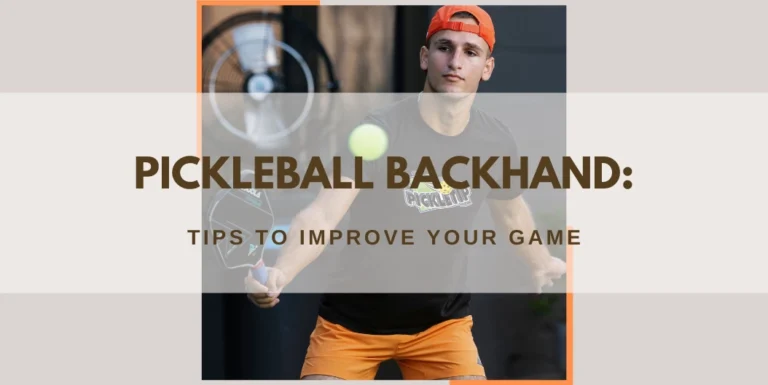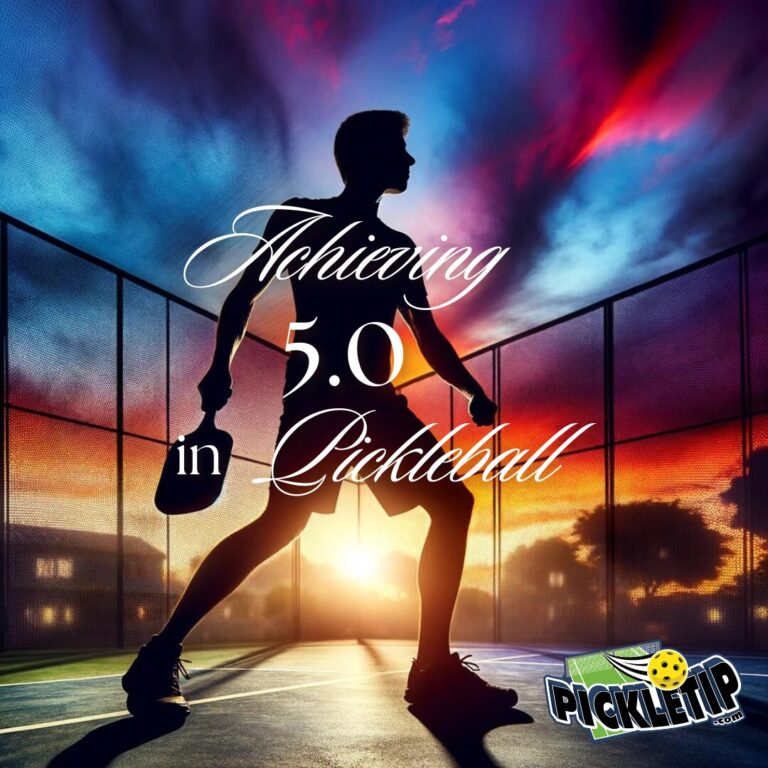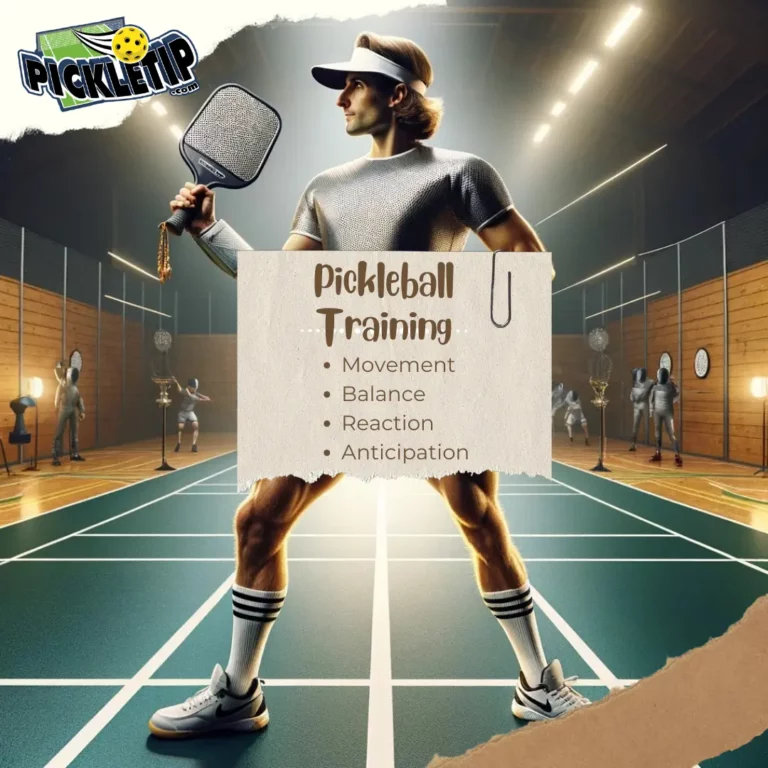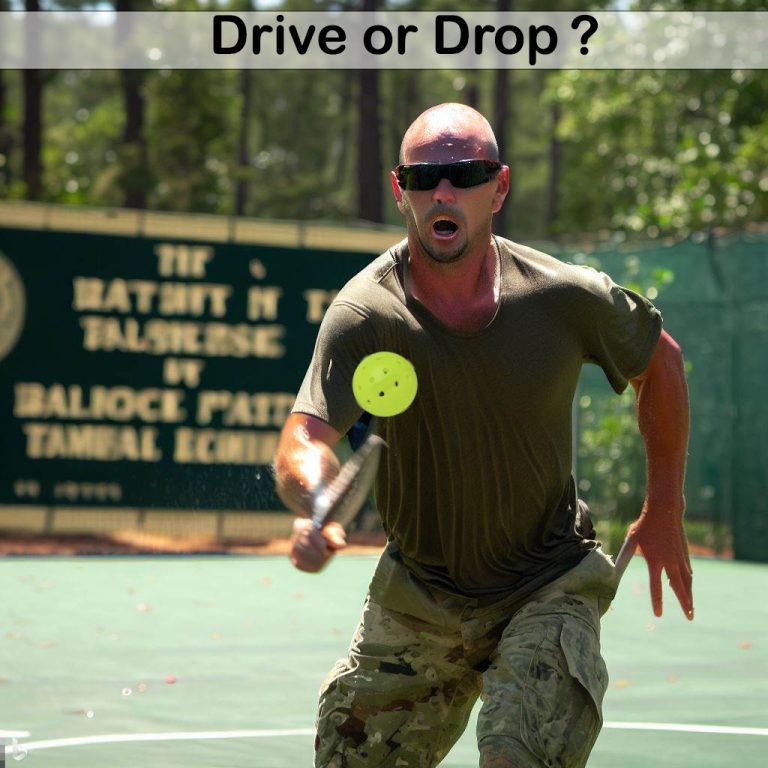Mastering Spin in Pickleball
This comprehensive guide combines various insights and tips shared by pickleball enthusiasts, serving as a pivotal resource for players looking to master spin in pickleball. Whether a beginner or an experienced player, understanding and implementing spin can significantly impact your game strategy and performance.

Understanding the Importance of Spin
Utilizing spin is one of the most effective pickleball techniques. It can be a game-changer when applied effectively, affecting the trajectory, bounce, and pace of the ball. Mastering spin techniques such as topspin, backspin, and sidespin can significantly enhance a player’s game, allowing for more strategic plays and varied shot selections.
Types of Spin
Topspin
With topspin, the ball rotates forward, causing it to dip and bounce higher. It is advantageous for applying pressure, especially for shots below the net level, making it a crucial component of spin in pickleball.
Backspin
Backspin causes the ball to rotate backward, making it float and bounce lower. It is effective for keeping the ball down and is particularly useful when opponents are near the baseline.
Sidespin
Sidespin makes the ball rotate sideways, altering its trajectory and making it challenging for opponents to predict its path, adding another layer to the strategy of using spin in pickleball.
When and How to Use Spin
Understanding when and how to use each type of spin is crucial in pickleball. Here are some insights on using topspin, backspin, and sidespin effectively:
- Topspin: Ideal for high balls and situations where pressure needs to be applied on players. Useful for aggressive plays and when the ball is below net level.
- Backspin: Effective when opponents are far from the net or deep in the court. Useful for service returns, drops, and dinks.
- Sidespin: Useful for altering the ball’s trajectory and making it unpredictable.
How to Practice Spin Techniques
Practicing consistently and focusing on muscle memory can help in mastering spin in pickleball. Watching instructional videos from platforms like Youtube can also aid in visual learning.
Adding Spin to the Serve
Integrating spin into your serve can be a strategic move to throw off your opponent. Here’s how you can add spin to your serve, the implications of each spin type, and drills to practice:
Topspin Serve
How to: Accelerate the paddle upwards at the point of contact, brushing the top of the ball. This forward rotation causes the ball to dip and bounce higher.
Pros: It can pressure the opponent by forcing them to hit upwards, and it’s effective for shots below the net level, making it harder to return.
Cons: Requires practice to maintain accuracy and can sometimes lead to overhitting, sending the ball out of bounds.
Drill: Practice serving to a target area with the goal of making the ball bounce high and deep in the service box. Focus on brushing the ball with an upward motion. Repeat 20 times.
Backspin Serve
How to: Slice underneath the ball at the point of contact, causing the ball to rotate backwards and float. This results in a lower and slower bounce.
Pros: Useful for disrupting the opponent’s timing and forcing lifting shots, potentially leading to errors or weak returns.
Cons: If not executed properly, it can result in high bouncing balls, making it easier for opponents to attack.
Drill: Aim to make the ball skid or float by slicing underneath it. Practice serving to different areas of the service box, focusing on keeping the ball low. Repeat 20 times.
Sidespin Serve
How to: Strike the ball on its side, causing it to rotate around its axis and altering its trajectory.
Pros: Makes the ball’s path unpredictable, challenging the opponent’s footwork and hand-eye coordination.
Cons: Demands precision and control, and any misjudgment can lead to unforced errors or out balls.
Drill: Practice serving with sidespin to different areas of the service box, focusing on the lateral motion of the paddle. Observe the ball’s trajectory and adjust the angle of contact as needed. Repeat 20 times.
Adding Spin to Returns
Implementing spin in your returns can disrupt your opponent’s rhythm and give you a tactical advantage. Here’s a breakdown of how to add spin to returns, the pros and cons of each, and drills to practice:
Topspin Return
How to: Brush the ball with an upward stroke, generating forward spin. Aim for a low to high motion to ensure the ball clears the net but dips quickly.
Pros: Can put opponents on the defensive by forcing them to deal with high bouncing balls, creating opportunities for aggressive plays.
Cons: Requires good timing and can be less effective against opponents who are proficient at handling topspin.
Drill: Have a partner feed you balls to return with topspin. Focus on the upward brushing motion and aim for deep returns. Alternate between forehand and backhand. Repeat 20 times each.
Backspin Return
How to: Slice the ball with a downward stroke, causing backward rotation. This technique is effective for keeping the ball low and slow.
Pros: Can disrupt the opponent’s timing, forcing them to hit upward and making it easier to anticipate the return shot.
Cons: Can lead to weak returns if not executed with precision, allowing opponents to seize the offensive.
Drill: Practice returning balls with backspin by slicing underneath them. Aim for low and precise returns, focusing on the high to low motion of the paddle. Repeat 20 times.
Sidespin Return
How to: Strike the ball with a lateral motion, generating spin around its vertical axis. This can be achieved by hitting the ball on its side with a sweeping motion.
Pros: Alters the ball’s trajectory, making it difficult for opponents to predict the bounce and return accurately.
Cons: Requires practice to master the angle and contact point, and any misjudgment can lead to errors.
Drill: Have a partner feed you balls to return with sidespin. Focus on the lateral motion of the paddle and observe the ball’s altered trajectory. Adjust the angle of contact as needed. Repeat 20 times.
Adding Spin to 3rd Shots
Integrating spin into your 3rd shots can help in gaining control of the net and setting up offensive opportunities. Here’s how to add spin to 3rd shots, the implications of each spin type, and drills to practice:
Topspin 3rd Shot
How to: Execute a low to high stroke, brushing the top of the ball. This spin is effective when you want the ball to clear the net and then drop quickly into the non-volley zone.
Pros: Helps in maintaining offensive pressure by forcing opponents to hit upward on the ball, potentially setting up an attackable ball.
Cons: Demands accuracy and control, and any overhit ball can be easily attacked by opponents.
Drill: Practice hitting 3rd shots with topspin to a target in the non-volley zone. Focus on the low to high motion of the paddle and aim for a quick drop of the ball over the net. Repeat 20 times.
Backspin 3rd Shot
How to: Slice underneath the ball with a high to low motion, causing the ball to float and bounce lower. This is effective for drop shots into the non-volley zone.
Pros: Can create difficulties for opponents in attacking the ball, allowing you to approach the net and gain a better position.
Cons: Requires finesse and touch, and any poorly executed shot can result in a high and attackable ball for opponents.
Drill: Practice hitting 3rd shots with backspin to a target in the non-volley zone. Focus on the slicing motion and aim for a soft and controlled touch. Repeat 20 times.
Sidespin 3rd Shot
How to: Hit the side of the ball with a sweeping motion, causing lateral rotation. This spin can be used to send the ball to the opponent’s weaker side or to pull them out of position.
Pros: Can disrupt the opponent’s rhythm and footwork, creating openings for subsequent shots.
Cons: Needs practice to find the right balance between spin and pace, and any misjudgment can lead to unforced errors.
Drill: Practice hitting 3rd shots with sidespin to different areas of the non-volley zone. Focus on the lateral motion of the paddle and adjust the angle of contact to alter the ball’s trajectory. Repeat 20 times.
Adding Spin to Dinks
Applying spin to your dinks can make them more effective and challenging for your opponents. Here’s a guide on how to add spin to dinks, the pros and cons of each spin type, and drills to practice:
Topspin Dink
How to: Brush the ball upwards at the point of contact, causing it to dip quickly over the net. This is effective for short and angled dinks.
Pros: Can force opponents to pop the ball up, creating opportunities for put-away shots.
Cons: Requires precision and control, and any overhit ball can be easily attacked by opponents.
Drill: Practice dinking with topspin to a target near the net. Focus on the upward brushing motion and aim for a quick and sharp drop of the ball over the net. Repeat 20 times.
Backspin Dink
How to: Slice the ball with a downward motion, causing it to float and stay low after the bounce. This is effective for neutralizing the point and keeping opponents at bay.
Pros: Can make it difficult for opponents to attack the ball, allowing you to maintain a better position at the net.
Cons: Demands touch and finesse, and any misjudgment can lead to unforced errors or high balls.
Drill: Practice dinking with backspin to a target near the net. Focus on the slicing motion and aim for a soft and controlled touch. Repeat 20 times.
Sidespin Dink
How to: Strike the ball with a lateral motion, causing it to spin sideways. This is effective for pulling opponents out of position and creating openings.
Pros: Can disrupt the opponent’s balance and timing, making it challenging for them to return accurately.
Cons: Requires practice to master the angle and contact point, and any error can lead to out balls or easy returns for opponents.
Drill: Practice dinking with sidespin to different areas near the net. Focus on the lateral motion of the paddle and adjust the angle of contact to alter the ball’s path. Repeat 20 times.
Spin in Pickleball
Mastering spin in pickleball can elevate your game, allowing for strategic plays and varied shot selections. By practicing consistently and applying spin judiciously, you can keep your opponents guessing and gain a competitive edge in your pickleball games. Always consider the risk and reward before opting for a spin shot, and use it as a strategic tool to enhance your game.








2 Comments